|
7/22/2018 Comments Skin care with something blue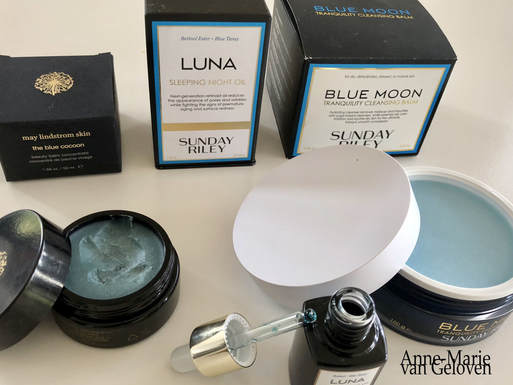
Lately I was trying out several skin care products with a very similar smell, which I actually started to appreciate during my evening skin care routine.
Usually, an overpowering fragrance in a product puts me off, however I consider this one soothing. The (in my opinion) pleasant odour comes from an ingredient called Tanacetum Annuum or Blue Tansy (Moroccan Blue Chamomile - not to be confused with Tanacetum Vulgare) and is found as the signature ingredient in some more luxury "Blue" products like May Lindrom's beauty balm concentrate called "The Blue Cocoon", Sunday Riley's tranquility cleansing balm called "Blue Moon" (Blue Tansy Leaf oil) and her sleeping night oil called "Luna". All products are relatively "oily" and you only need the littlest amount. Blue Tansy is "calming", as it supposed to have anti-inflammatory and anti-allergenic, anti-histaminic and anti-fungal properties. Tanacetum Annuum is an essential oil with a very dark blue collar due to chamazulene. The aromatic description is sweet, warm fruity, with subtle floral, camphorous and herbaceous undertones. It's most often mixed in with other oils or ingredients to dilute it, as the recommendation is not to use concentrations above 5%. Although it has anti-inflammatory properties, some might have intolerance for it as it contains camphor, which can cause sensitivity. Therefore, I would not recommend to use multiple products containing Blue Tansy in conjunction. Pure Blue Tansy oil is not easy to get hold of, thus an expensive ingredient. If I was asked choose one product, I would pick Sunday Riley Luna sleeping night oil which also contains Retinol. Luna is easy to use and incorporate in a night time regimen, is less expensive when compared to May Lindrom's "The Blue Cocoon", very popular amongst "beauty guru's" and receives many positive reviews. Alternatively, there are other evidence based skin care ingredients with proven anti-inflammatory properties, for example Arctiin (anti-inflammageing, stimulates hyaluronic acid and collagen production) and Licochalcone (also powerful anti-oxidant). They don't have the blue colour or "calming" odour, which some may find offensive. Hope you enjoy healthy skin & take care.
Comments
7/22/2018 Comments Chemical or mechanical exfoliation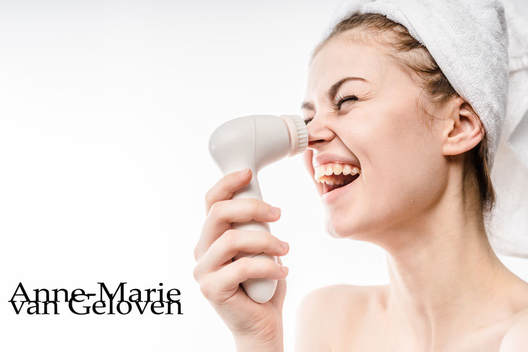
We can support's skin natural exfoliation process in various ways, for example with mechanical or chemical exfoliation.
Desquamation (shedding of skin cells thus exfoliation) is an important part of the skin's natural regeneration or renewal process. Already in our twenties, this process slightly, however increasingly starts to slow down (Kligman 1983). As a result, the cells on the surface of our skin (corneocytes) become bigger (Kligman 1989) and a little disorganised. This leads to a duller appearance (loss of radiance) and a more rough texture of our skin. A very comprehensive comparison of both methods:
The word "acid" unfortunately sounds very harsh and skin-unfriendly. Many acids are actually skin's own, like for example lactic acid is a skin's own natural moisturising factor (NMF) and so is hyaluronic acid. The level of NMF's decrease as we age and our skin my lose the ability to maintain well hydrated. Many years ago the benefits of lactic acid were capitalised by using baths filled with donkey milk. Citric acid is commonly used in skin care products and toners to balance skin's pH. Gluconolactone is only gradually penetrates skin and is very gentle.
It's unfortunate that "acids" have such a negative connotation, as our skin (healthy and problematic) can benefit if we use them regularly. Moreover, I prefer this method over mechanical exfoliation for all skin types, however particularly if you have dry skin, acne- or redness prone skin, sensitive skin or mature skin. The risk of exfoliation is over-exfoliation. Over-exfoliation is damage of our skin barrier and the symptoms are very comparable to dry or (hyper) sensitive skin symptoms, which are: redness, irritation, tightness, excessive dryness, dry patches, flaking skin, uncomfortable stinging, or even burning sensation. Whenever you experience one or more symptoms of over-exfoliation, it's recommended to reduce the number of times you exfoliate and support the skin barrier repair with a moisturiser. Hope you enjoy healthy skin & take care. 7/15/2018 Comments Facial oils bad for skin?!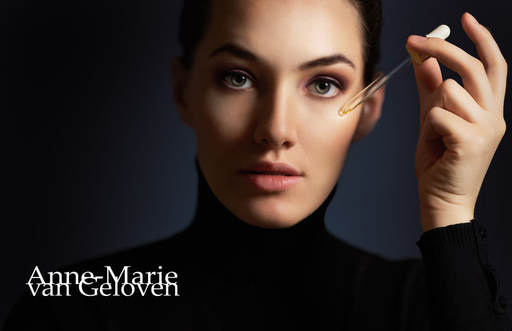
Facial oils are a trending skin care product at the moment, loved and recommended by many "beauty guru's" and skin care experts. This is why I found it very interesting to read a comment written by a well respected dermatologist claiming that face oils would stifle skin renewal and exfoliation and would make skin dull over time. She must have a reason why she is saying this, and that's why I looked into this a little bit deeper.
To start with, I've done own research (not just me) with a facial oil, included many testers and found many benefits and no draw backs during the duration of the study. Moreover, I jumped out of my chair (literally) when I saw the visible results from the clinical photography, no joke! We've found that the oil (a combination of Argan oil and Lady's Thistle oil) improves moisture, elasticity and firmness, supports skin resilience, making the skin feel smooth and look more radiant. There was even a reduction of comedones detected. The results were published in a poster, accepted by the European Academy of Dermatology and Venereology in 2016. If you are an impatient person, and demand a fast answer, I can spill the tea right now: I've found no data to support that facial oils would stifle skin renewal and exfoliation, but the opposite. Moisturisers absolutely influence the skin barrier function and TEWL (transepidermal water loss - which is used to measure the skin barrier function). A good barrier function (confirmed by low TEWL), positively contributes to the skin cell renewal process, which includes skin exfoliation process. Very dry skin has an increased TEWL, and so does very well hydrated skin. There is simply more water on the skin surface to evaporate. A high TEWL with very well hydrated skin can therefore give the impression of an impaired barrier function and thus give a "false positive". This phenomenon is nicely explained in a publication by Marie Loden "Effect of moisturizers on epidermal barrier function". Looking at non fragrance plant oils also called fixed oils, there are many and they are all different, so it's impossible to generalise. Many plant oils, like almond, jojoba, soybean and avocado oils mostly remain on the skin surface. Even without penetrating deeper into the outer layer of the skin (called epidermis), the occlusive effect of plant oils will reduce water evaporation from the skin and help the growth of the cells of the top layer called keratinocytes. They actually support the skin barrier and therewith skin cell renewal. Part of the skin cell renewal is a process called desquamation, which is skin's natural exfoliation of dead skin cells. Helping this process will make skin appear more radiant and smooth, not duller. The benefits of plant oils are supported in many publications, one of which is found in the International Journal of Molecular Sciences anti inflammatory skin barrier repair effects by Tzu-Kai Lin 2017. Argan oil One of the most popular and well researched fixed oils is organ oil. It contains oleic and linoleic fatty acids. Both are part of our skin's natural intercellular lipid-enriched matrix or skin barrier. Linoleic acid (an omega 6 fatty acid) is in fact the most abundant polyunsaturated fatty acid. Our skin barrier is protecting our skin from water loss and penetration of external agressors. Thus the skin barrier keeps the good stuff in and bad stuff out. Linoleic acid plays a direct role in maintaining the integrity of this skin barrier. Some research shows that oleic acid may indeed disrupt the skin barrier and act as an permeability enhancer, helping other ingredients to penetrate deeper. When oleic acid is continuously applied, it could lead to barrier problems. Another ingredient in argan oil is tocopherol or vitamin E. Tocopherol is well known for it's antioxidative effect (neutralising damaging free radicals from pollution or sun which cause premature ageing) and lesser known for supporting the skin barrier. Daily topical application of argan oil (the finished product which contains multiple ingredients) has shown to improve skin elasticity (firmness), improve the skin hydration by restoring the barrier function and maintaining water-holding capacity. Furthermore it has a softening and relaxing effect on skin. Lady's Thistle oil The oil of the Milk Thistle plant (also known as Silybum Marianium) is a common ingredient in anti-aging skincare. It contains skin barrier supporting Linoleic acid and is known to nourish skin and improve radiance. Facial oils are certainly not for everybody, but in general skin will benefit from a cold pressed fixed plant oil or a mixture. Don't smother skin with oils, just apply a few drops by itself on the skin prior or after your moisturiser, or mix a few drops with your moisturiser of foundation. Hope you enjoy radiant skin & take care. 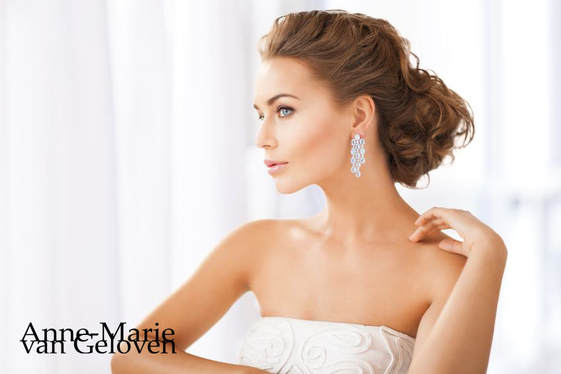
Anything you don't enjoy using or doesn't cater to your needs, is not worth buying.
Skin care is personal and there is a good product for all wallet sizes. However, is a luxury product better than a more affordable one? Is expensive the best? There are actually many factors influencing the prize of a product, other than the prestigious brand-name and advertising costs. Note: This content will mainly apply to skin care catering to the need of healthy, thus not problematic skin types. Problematic (or diseased) skin needs special care which usually is not found in the prestige or luxury skin care segment. Realistic expectations If you are disappointed by the results your skin care products, you might not have bought the right product for you. Make sure that your understand your skin type. There is also a change that you might have too high expectations of what skin care can actually do for you. Your skin will definitely benefit from a good skin care regimen with the right product(s). However, don't expect a metamorphosis, especially not from one day to the next. There are limitations to what skin care can do for your skin and actually what skin care is allowed to do. These rules apply for all skin care products. Formula Some very excellent skin care ingredients are expensive, however there are many very good ingredients which are affordable. Expensive ingredients can be useless "actives" in skin care, and "sound" appealing. Usually "rare" ingredients are expensive, but not all rare ingredients are "the best" actives. The majority of active ingredients only give visible or noticeable results in optimal concentrations. Many skin care products in the prestige or luxury skin care category have long INCI lists (ingredient lists). This will increase the price of the product, but does not necessarily mean that this is the right skin care for you. Furthermore, there is more to a formula than an ingredient list! If the end products texture (also called galenics) is too greasy or too light for your liking, you might not enjoy using the product, and it is not worth the splurge. Luxury brands invest in pleasurable textures of the formula to ensure a positive user experience and high repurchasing rate. A nice texture, doesn't necessarily ensure high performance of a product. Actually the more occlusive products (sometimes regarded as greasy or heavy), are commonly well performing in preventing transepidermal water loss, thus hydration. Note: especially with very long ingredient lists it is highly recommended to try the product before you buy, particularly if you have sensitive skin, as the risk of a skin reaction is increased when the number of ingredients is high. Check also if the product was tested and proven suitable for sensitive skin in this case. Innovation & technology New active ingredients may be exclusively developed by a company and it took them a lot of time, effort and money to collect enough data and proof that this particular active ingredient is effective and safe to use. Products containing such a (probably patented) ingredient can be more expensive than products with more generic frequently used ingredients. Sometimes expensive technology is especially developed or used to improve the formula, texture or container. Packaging Formula's may need a special container or dispenser to be stored appropriately. This is more expensive than a simple standard packaging. Some containers are only luxury and aim to look amazing in your bathroom or on your dresser. Others might be very "inviting", quick and easy to use. If this is what you prefer and enjoy, it might be worth the splurge. Evidence based Evidence is in my opinion compulsory, however not always scientific. Real proof and particularly scientific proof or clinical proof is expensive and time consuming. The best proof is a combination of scientific publications (in peer reviewed journals) and "product-in-use" tests (most similar to daily use) with large representative groups. A claim xx% of testers agree with a panel of 6 or 25 testers, is not enough to be significant. If you want certainty about the benefits of a product, a formula which has proven to be very effective and well tolerated might be worth the splurge. Usually (not always) brands that are recommended by or sold through dermatologists, aesthetic doctors or health care providers have conducted more rigorous research to provide the doctors with evidence, so they feel confident in recommending the product. Likeability brand Some brands have a great story, background, founder and thus a high likeability or appeal. Some huge companies producing large quantities may have lower production costs per product than small companies producing a limited number of products at an external supplier. Some brands "harvest" their own ingredients, have an intense auditing procedure for suppliers or special requirements for the ingredients they use. These factors influence the price of the product. It's certainly not worth the splurge, if you don't like the brand or the company behind the brand. If you have special wishes or requirements, you might be willing to pay for those. Indulge If you love special skin care, indulging "me-moments" and therewith skin care is high on your priority list, you will look at a pricy skin care purchase very differently from someone who just wants an effective moisturiser. If the product or the purchase makes you more happy and you it's use, it might be very well worth the splurge. Need Last but not least, any purchase you make only makes sense if the product fits your needs (skin type and concerns) and your skin care regimen. Try before you buy Some expensive high end products may be worth the splurge, if you enjoy them too. However, there are good affordable alternatives available. The most expensive isn't per se the best or the best for you. Do some research on the product and check reviews from customers. I would recommend to ask a sample and try every product before you buy it and preferably apply it first on the area where you want to use it. For example: applying a product on your hand in the store is not the same as trying it on your face, neck or décolletage! I apologise for the length of this blog post, but the answer is not so easy. Any purchase you make depends on what your are looking for, are willing and able to spend. Invest in proper cleansing before applying any serum or care. If the skin care product is so expensive that you are hesitant to actually use it and you know that it will sit in your bathroom untouched, it's not worth to buy it. If you already own such a product, rather use it and keep the empty container on display. Hope you enjoy and use your skin care. 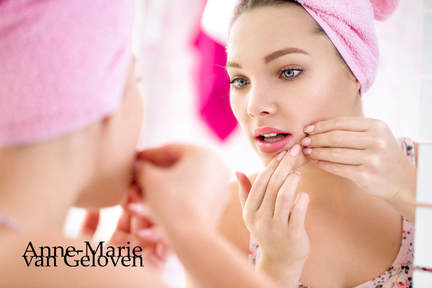
Understandably we want to get rid of pimples as soon as possible and sometimes apply harsh products to our skin in order to shrink them.
Depending on which ingredient is used, you might inflict injury to the skin and it's barrier which is very comparable to a mild burn. There is even a phenomenon called "toothpaste burn". During the healing process there is a risk of scarring. A study published by Tan J. et al in JJD 2017 shows that up to >87% of patients with mild to moderate acne reports atrophic scarring (sunken scar) to some degree. A healthy skin barrier and well hydrated skin will support a the healing process. However, as the barrier is impaired and the skin dried out, the skin's regeneration and healing process will take longer. Therefore be careful with "shrinking" pimples. The same applies for "popping" pimples, as this method by definition will cause injury to the skin. Picking and squeezing pimples will further irritate the skin tissue and delay proper healing. The risk of scarring is increased when the tissue is inflamed. A recent study of prevalence and risk factors of acne scarring confirmed that there is a relationship between the time between onset and effective treatment. Acne scars can be more difficult to treat than acne! It's better to seek expert advice if you have problematic skin. Take care. 7/12/2018 Comments Relation skin pH and ageing process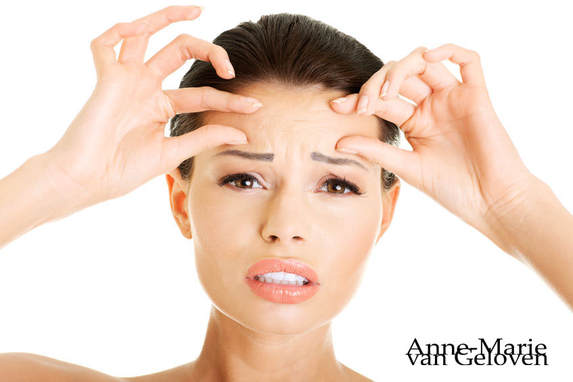
A high pH value contributes to premature ageing skin!
A study published in British Journal of Dermatology showed that women with an alkaline stratum corneum (outer layer of the skin) developed more fine lines and crow's-feet (wrinkles at the outside corner of the eyes) than those with acidic skin over an eight-year period. This might be in part because an alkaline epidermis (top layer of the skin) tends to be drier and more fragile than an acidic one. Irritants can enter the skin and water can evaporate more easily. People with hydrated skin showed a 50% lower rate of wrinkling than those with dry skin. If the acid mantle is not intact, it can make skin more susceptible to inflammation (inflammaging) and lowered enzymatic activity, which again increases the risk of development of signs of ageing. Last but not least, alkaline skin is more prone to sun damage thus photo-aging, because its protective barrier has been weakened. pH balance is fragile. I just mentioned that alkaline skin tends to be drier, however it’s also known that the oils secreted by our skin impact skin’s pH by increasing it. This is one of the reasons that oily skin types can be more prone to acne, as the skin’s pH influences it's microflora. That's a topic for another blog post. You’ve maybe seen some of my previous posts on skin’s pH and it’s actually one of my major topics. This is because healthy skin starts with an optimal pH balance. Click below in the featured categories on “Skin pH” if you like to learn more about pH. If there is a specific topic you are interested in missing, please place a comment below and I will see to it that I address it. Take care. 7/10/2018 Comments Facial toners redundant?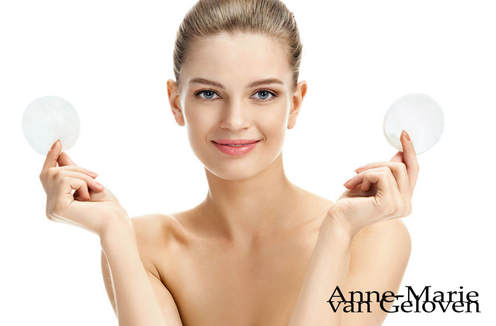
Recently I've read an article in which facial toners were called a redundant step in the cleansing routine. They would not serve any purpose anymore and would be “old-fashioned". I disagree, and will explain why.
Particularly when you prefer wet facial cleansing (water has a pH of 7-8), your skin’s pH goes up and you may consider using a toner to bring it back to normal (~5) before using a moisturizer or serum. This also applies if you use an alkaline cleanser or micellar water. It is common that products which are suitable to be used around the eyes, like micellar water, are adapted to a more “eye-friendly” and less “skin friendly” pH of ~7. Skin prefers a pH of ~5. In my humble opinion, toners are a very important step in every a.m. and p.m. skin care regimen for both healthy and particularly problematic skin types. They refresh, remove left-over debris and make-up and moreover instantly rebalance skin’s pH value. A balanced pH value is the cornerstone for healthy skin. An optimal pH supports skin's microbiome (microflora or "ecosystem") and barrier function. Furthermore, the use of a toner usually helps the penetration and thus efficacy of your care product! Alternatively, you can use “chemical” exfoliating lotions or pads which contain AHA (glycol, citric and lactic acid), BHA (salicylic acid), PHA (gluconotactone), etcetera. Just be careful using them around the eyes or even avoid this area. Hope you enjoy healthy skin & take care. 7/8/2018 Comments Wellness not skin friendly?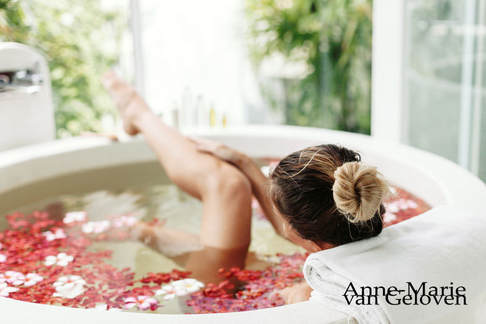
Long showers and bathing, though considered wellness or “home spa” experience, may actually cause a major disruption to our skin’s pH and skin barrier. The same goes for swimming (in salty sea or pool with chlorine).
These activities increase the risk of skin sensitivity and dryness. Water has a pH of 7-8 while our skin’s optimal pH balance requires a pH ~5. To make long showers and bathing a more a skin friendly experience, it is highly recommended to use non-alkaline or slightly acidic gentle cleansers (preferably with a pH ~5). If you have time, apply afterwards a pH rebalancing body lotion or butter. Your skin will surely appreciate it. I would personally never even consider applying an alkaline body product, as it might take the skin several hours to rebalance it’s pH on a large surface. Instead of hydrating your skin, you may in fact increase the risk of water loss; which is a waste of precious time and (expensive) product. Surely, I don't want to discourage anybody from enjoying swimming, relaxing long showers and baths! Just give your skin a "little love" afterwards. 
Although I am writing this blog post as a private person, the skin care company I am working for as a senior global medical manager was one of the first, if not the first to understand the importance of optimal pH balance of the skin, the cornerstone for healthy skin of face and body. Every day, we expose our skin to pH disruptors, like water (usually a pH of 7-8), alkaline soap, sun, pollution and many more. Even though our skin is resilient and eventually will go back to it’s optimal pH (»5), it is common sense and beneficial for our skin’s health to support our skin with a suitable skin care regimen, reducing disruption and promoting pH-balance.
WHAT IS pH? pH literally means the power (or concentration) of hydrogen atoms in a substance. Substances with a higher concentration of Hydrogen atoms than Hydroxide molecules have a greater acidic 'power' (acids), while those with lower H+ (Hydrogen) and higher OH- (Hydroxide) concentrations have less acidic power (bases). The pH scale runs from 0 to 14: 7 is a neutral pH, values below 7 (6-0) are increasingly acidic while values above 7 (8-14) are increasingly basic. There is a 10-fold difference in concentration between these values, meaning that pH 0 is 10 times stronger than pH 1, 100 times stronger than pH 2, and 10,000,000 times stronger than pH 7. With other words; a slight increase in pH, can make a big difference for your skin. SOME PHYSIOLOGICAL FUNCTIONS OF SKIN pH
SKIN BARRIER pH plays a fundamental role in the skin's barrier, acid mantle or buffer, which is formed by secretions from sweat and sebaceous glands as well as the breakdown of fatty acids by beneficial micro-flora. The barrier functions like an invisible protective veil (hydrolipid film) that protects skin’s lipids, moisture loss and unwanted allergens, pollution and bacteria. The acid mantle is at its strongest and most optimal balanced when the skin is slightly acidic, with an average pH of about 5.5 (ranging anywhere from 4.5 to 6.2). However, different areas of the body have slightly different requirements and different optimal pH ranges. The skin of women is slightly more acidic than skin of men. pH BIORYTHM Skin surface pH decreases during normal working hours with maximum values in the afternoon and minimum values during night time. You’ve probably heard that our skin regeneration is most optimal during night time? Indeed, our skin’s pH plays a key role in this too. In separate posts I will address various specific skin pH related topics, as I could go on forever about pH. There is so much to share on this topic (and still to discover) and balanced pH is essential for healthy skin, from cradle to grave, for all skin types & all phototypes. Please check out my other posts, if you are interested. Hope you enjoy healthy skin & take care. 7/7/2018 Comments Skin's pH influences hydration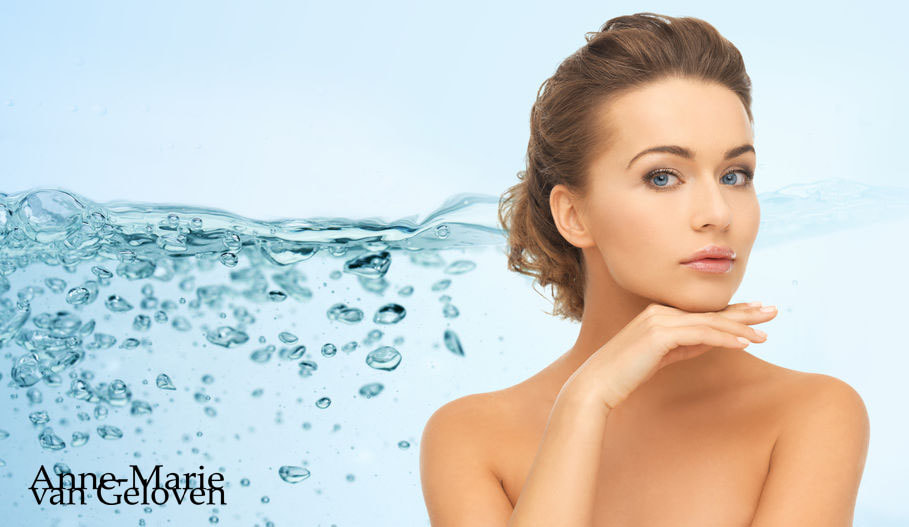
Our skin’s pH plays an important role in many processes influencing skin hydration.
Increased pH (more alkaline >6) values correspond with an increase in trans-epidermal water loss, which we refer to in studies as TEWL, one of the most significant indicators of a good epidermal barrier function. The epidermal barrier protects our skin against (excessive) loss of water and thus protects the maintenance of correct hydration. The skin pH promotes the correct organization of the matrix lipids too, by regulating their surface structure and stability. All leading up to better hydrated skin. It makes sense to pay attention to pH when buying your cleansing and care products. Hope you enjoy healthy skin & take care. 
There is data suggesting that skin is more prone to sun damage when skin has higher pH levels (>6). The daily use of sunscreen defends the acid mantle by protecting skin cells from sun damage and increasing the skin's ability to protect itself.
Some active ingredients used in sunscreen can increase skin´s optimal pH and are less effective at lowered pH. Ingredients like zinc oxide and titanium oxide (mineral or physical sunscreens) have an optimal “pH window” in which they are more effective. If the pH of zinc oxide or titanium oxide is too low, the oxides will actually dissolve and thus lose efficacy. I understand that some of you might be in favor of only using mineral or physical sunscreen, however with chemical filters or a mix, you most probably maintain a more optimal pH-balance. This is particularly something to consider if you have acne-prone skin, problematic skin, or a sensitive or (very) dry skin type as your skin barrier might already be compromised. Hope you will enjoy the sun well-protected, while maintaining healthy skin. 7/7/2018 Comments Sleep in your eyes
That sometimes yellowish coloured "goop" in your eyes when you wake up has a function.
The scientific name of "sleep" is rheum, and is in fact a combination of dried tears, oils, skin cells, debris and mucus. The tear ducts produce 24/7 tears to keep the eyes moist and protect our eyes against dirt, irritants, allergens and bacteria. Because you don't blink while you are sleeping, you don't "wipe away" the excess of tears with debris. It can be wet and sticky. After a while, the some of it's liquid may evaporate and the rheum may end up crusty and ends up collected in the inner-corners of your eyes. Although unflattering, it's perfectly normal. Simply remove the rheum using a wet (clean water only) cloth or cotton pad and wipe towards the inner corner of the eye. A few conditions can increase the production of sleep. For example: allergic conjunctivitis or eye infections. The amount of rheum can be so severe in the morning that the eyes are "glued" together and difficult to open. In such cases it's recommended to consult a qualified healthcare provider. Take care. |
CategoriesAll Acne Ageing Aquatic Wrinkles Armpits Biostimulators Blue Light & HEVIS Cleansing CoQ10 Cosmetic Intolerance Syndrome Deodorant Dermaplaning Diabetes Dry Skin Evidence Based Skin Care Exfoliation Exosomes Eyes Face Or Feet? Facial Oils Fibroblast Fingertip Units Gendered Ageism Glycation Gua Sha Hair Removal Healthy Skin Heat Shock Proteins Hormesis Humidity Hyaluron Hyaluronidase Hypo-allergenic Indulging Jade Roller Licochalcone A Luxury Skin Care Lymphatic Vessel Ageing Malar Oedema Menopause Mitochondrial Dysfunction Mood Boosting Skin Care Neurocosmetics Ox Inflammageing PH Balance Skin Photo Biomodulation Polynucleotides Psoriasis Regenerative Treatments Review Safety Scarring Sensitive Skin Skin Care Regimen Skin Flooding Skin Hydration Skin Senescence Skip-Care Sleep Slugging Sunscreen Tanning Under Eye Bags Vitamin C Well Ageing Skin Care Wound Healing Wrinkles
Archives
April 2024
|



 RSS Feed
RSS Feed
